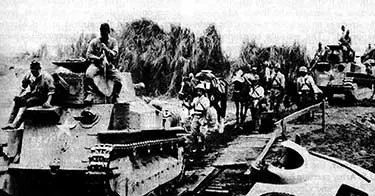The Rape of Tanauan by the Japanese in World War II and Its Difficulties after the War
On 7 December 1951, then Philippine President Elpidio Quirino signed Executive Order Number 486 requiring the compilation of historical data about barrios, municipalities and provinces, in most likelihood to compensate for important historical records lost during World War II.1 The compilations subsequently submitted by Department of Education Division Offices throughout the country are now archived at the National Library of the Philippines and are a rich cache of historical information about Batangas.
Among these were accounts of how the then-town of Tanauan suffered during and after the Japanese occupation of the country in World War II. These shall be retold in this article for the information of the younger generations not just in the City of Tanauan but also the rest of Batangas.
The occupation of Tanauan began one day in January in the year 1942. The United States defenses in the country were scant and totally incapable of resisting the advances of the Japanese Imperial Army. As American and Filipino forces retreated to Bataan to consolidate whatever defense the overrun Filipino-American forces could muster, they burned or destroyed facilities or installations owned by the United States Army that the Japanese could use to their own benefit.
This included blowing up the water facility at barangay Santor. As a consequence, the entire town proper was left without water supply. During the Japanese occupation of the town, roads and highways that used to be meticulously maintained under the American regime were left unrepaired.
Personal freedom and liberties erstwhile enjoyed by citizens of the town under the Americans were restricted by the troops of the invading army. Locals were “humiliated and treated as slaves by the invaders.” Food production was controlled by the Japanese and produce was commandeered for use by their troops when this was ready for consumption.
Locals were regularly forced to sell their beasts of burden and other livestock to the Japanese, who paid with the next to worthless currency that they issued. For instance, a duck egg sold for as high as ₱75, while a box of matches went for ₱100. The currency was not backed by gold reserves, hence was scathingly called by Filipinos as “Mickey Mouse” money.2
As the occupation neared its end with the arrival of the Allied Liberation forces late in 1944, food supplies became not only prohibitively expensive but also scarce. In the absence of their usual sustenance, locals in Tanauan tried to survive by eating coconuts, boiled corn, cassava and other root crops.
As the American forces advanced unrelentingly, thus forcing the Japanese into untenable positions in Batangas, the latter became increasingly desperate. They vented their anger and frustration upon the local Batangueño population, whom they saw as pro-American. They went on unimaginable drunken orgies of rape and murder.
Eight hundred and fifty men, women and children in total were mercilessly massacred by the Japanese. Many others who survived these atrocities were left badly wounded. A total of 1,665 houses were indiscriminately burned, leaving two thousand families homeless.
Among those who were mercilessly killed by the Japanese were some of Tanauan’s more prominent families. These included the family of Dr. Juan V. Pagaspas, founder of the Tanauan Institute, the Square Deal Banking Corporation, the Tanauan Retailers’ Association and the Tanauan Cooperative Store. His wife, the former Josefa Poblete, was a teacher at Tanauan Institute. Both were recognized as among the town’s civic leaders.
Also killed was Mr. Manuel Gonzales, a lawyer and Chief of the Special Agents Division of the Bureau of Internal Revenue, along with his wife and children. Similarly not spared was the family of the internationally renowned violin virtuoso Ernesto Vallejo.
While many properties around the town were razed to the ground by the Japanese in their drunken orgies, other structures also fell victim to the bombardments that came part and parcel of the war. The most prominent of these was the antiquated church and convent built by the Augustinian friars during the Spanish regime.
After the war, the entire country buckled down to face the massive task of reconstruction. In Tanauan, citizens started to rebuild their homes with funds from the War Damage Commission. Reconstruction of public schools, roads and bridges also commenced. The public market was expanded and water works and electricity were restored. Little by little, people’s lives started to return back to normal.
The scars of war, however, would remain even years after the war ended, as this excerpt from the Tanauan historial compilation shows:
“The actual value of the properties destroyed can never be estimated. After eight years of liberal aid from America, the people had not as yet fully recovered nor rehabilitated; and the ill effects of the war, such as banditry, highway robbery, murder, kidnapping for ransom and other serious crimes were very rampant; and the sky-high prices of prime commodities were still keenly felt and likely to be felt for some time more.3” [Edited in parts for grammar.]
2 “Japanese government-issued Philippine peso,” Wikipedia.
3 All information pertaining to Tanauan during and after the war from “History of Tanauan,” online at the National Library of the Philippines Digital Archives.

